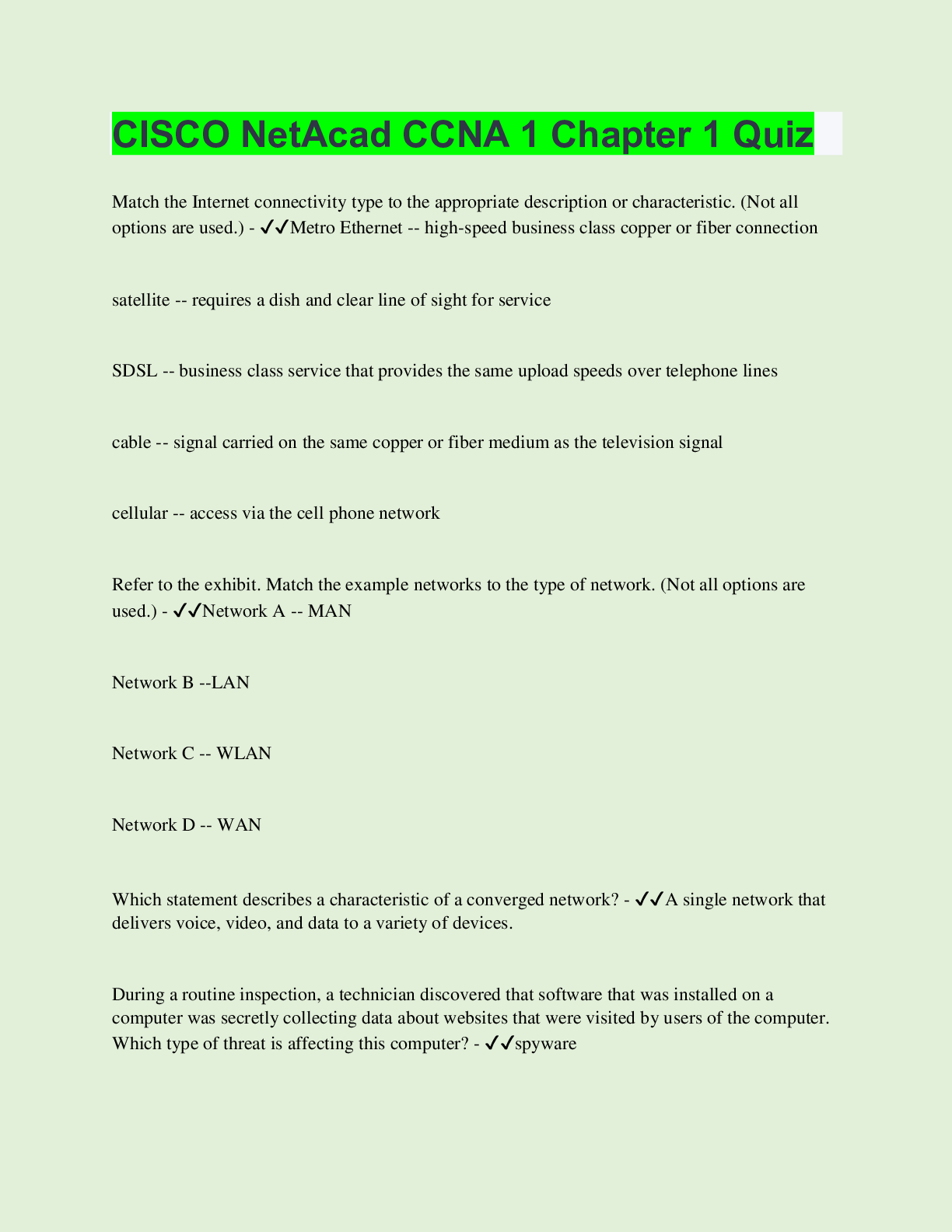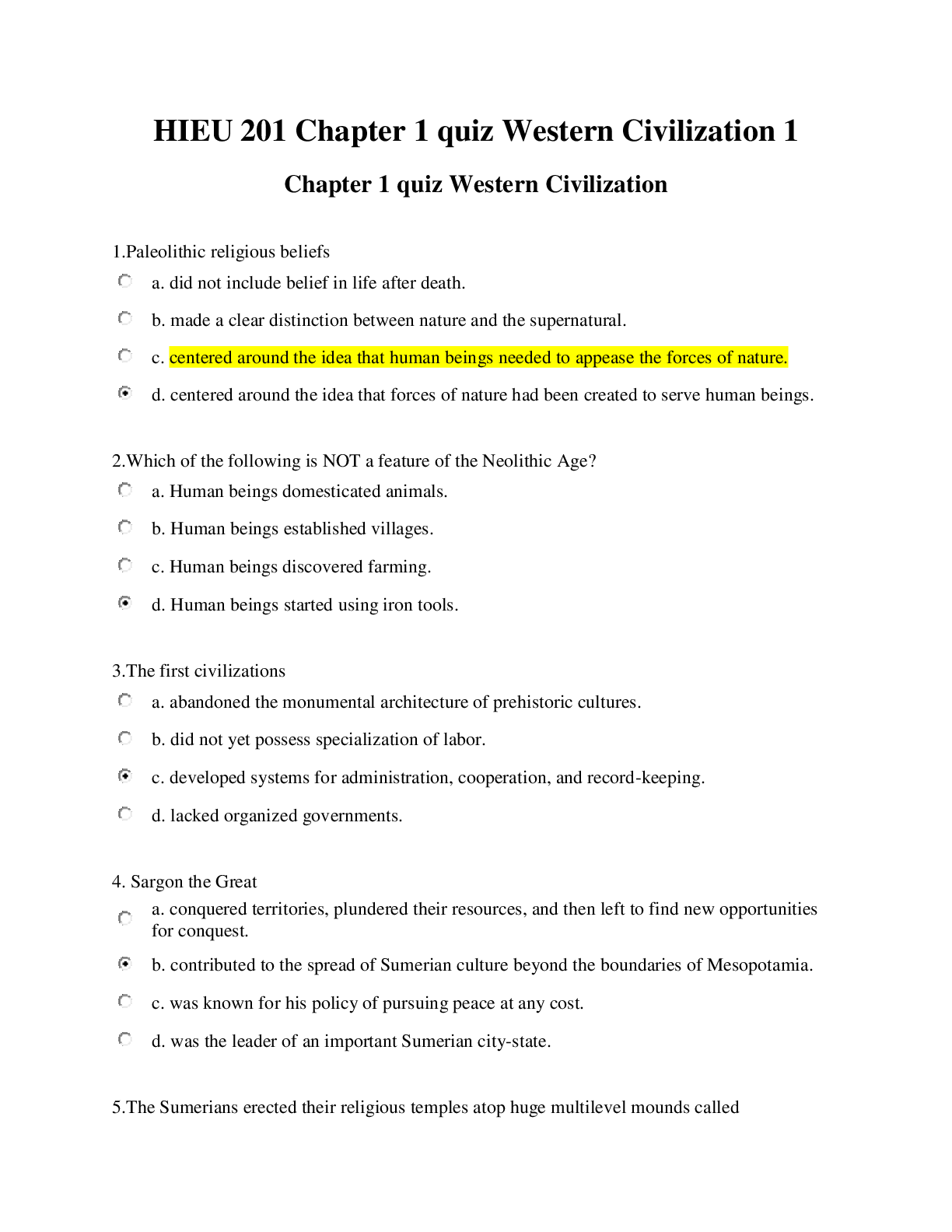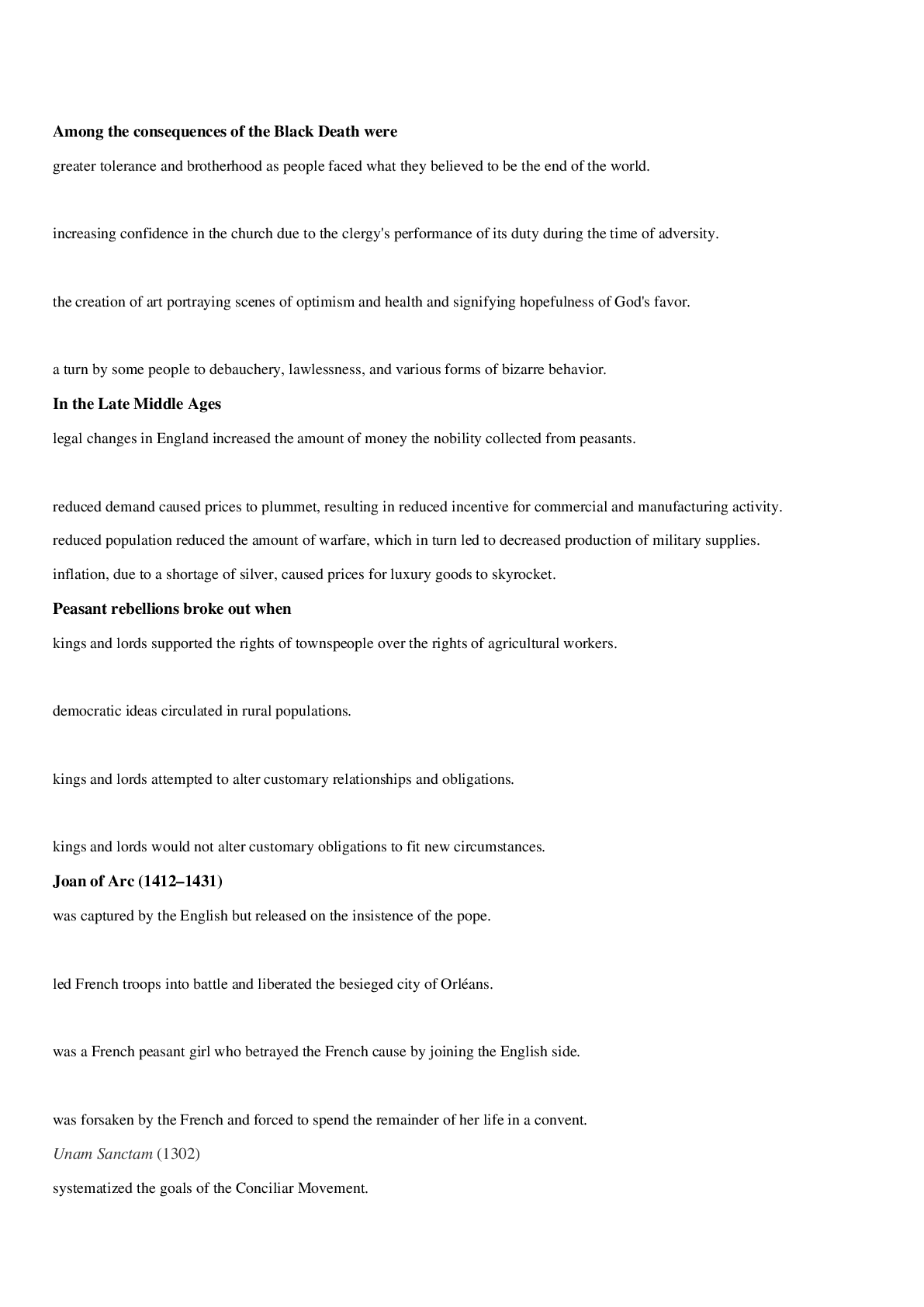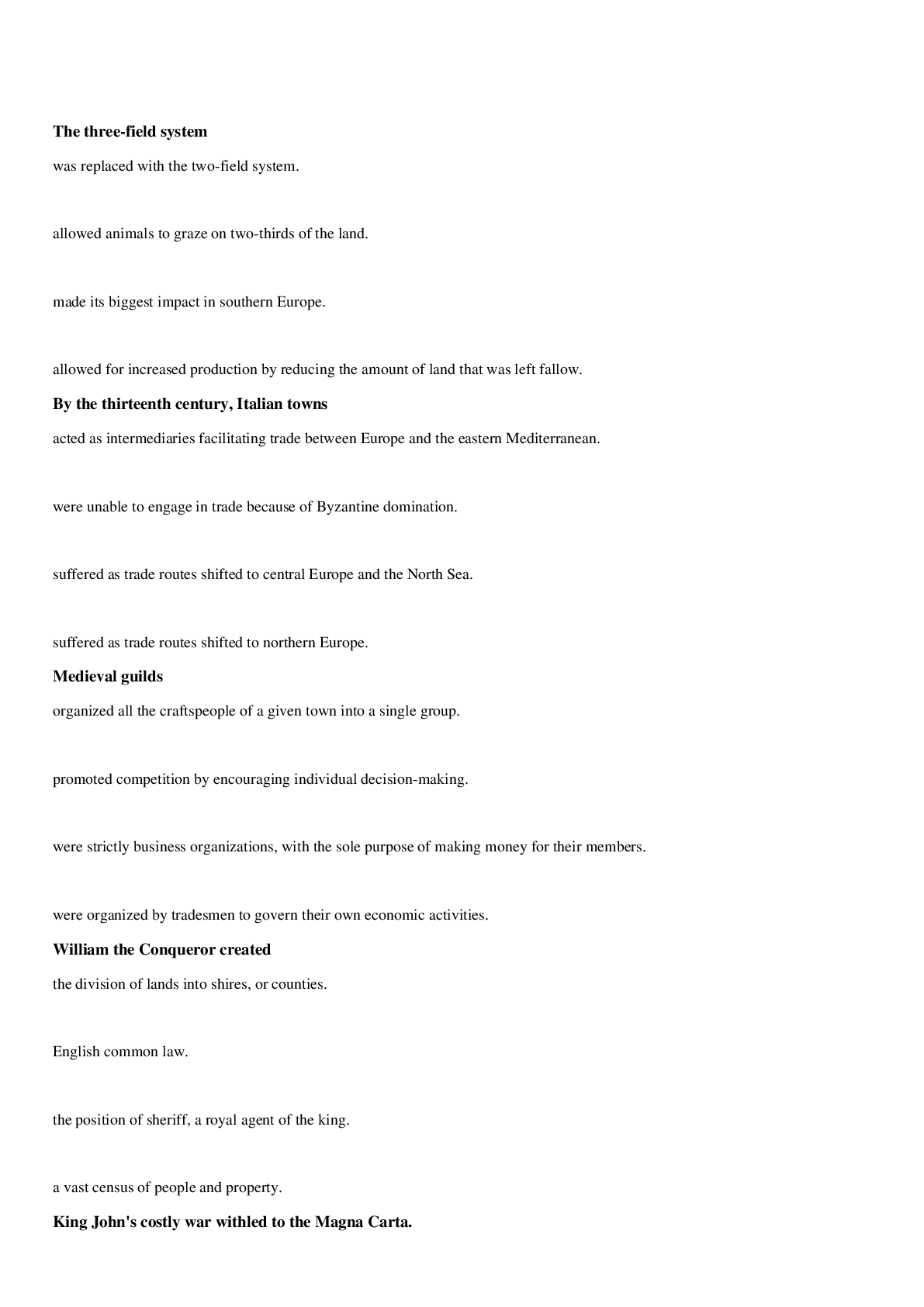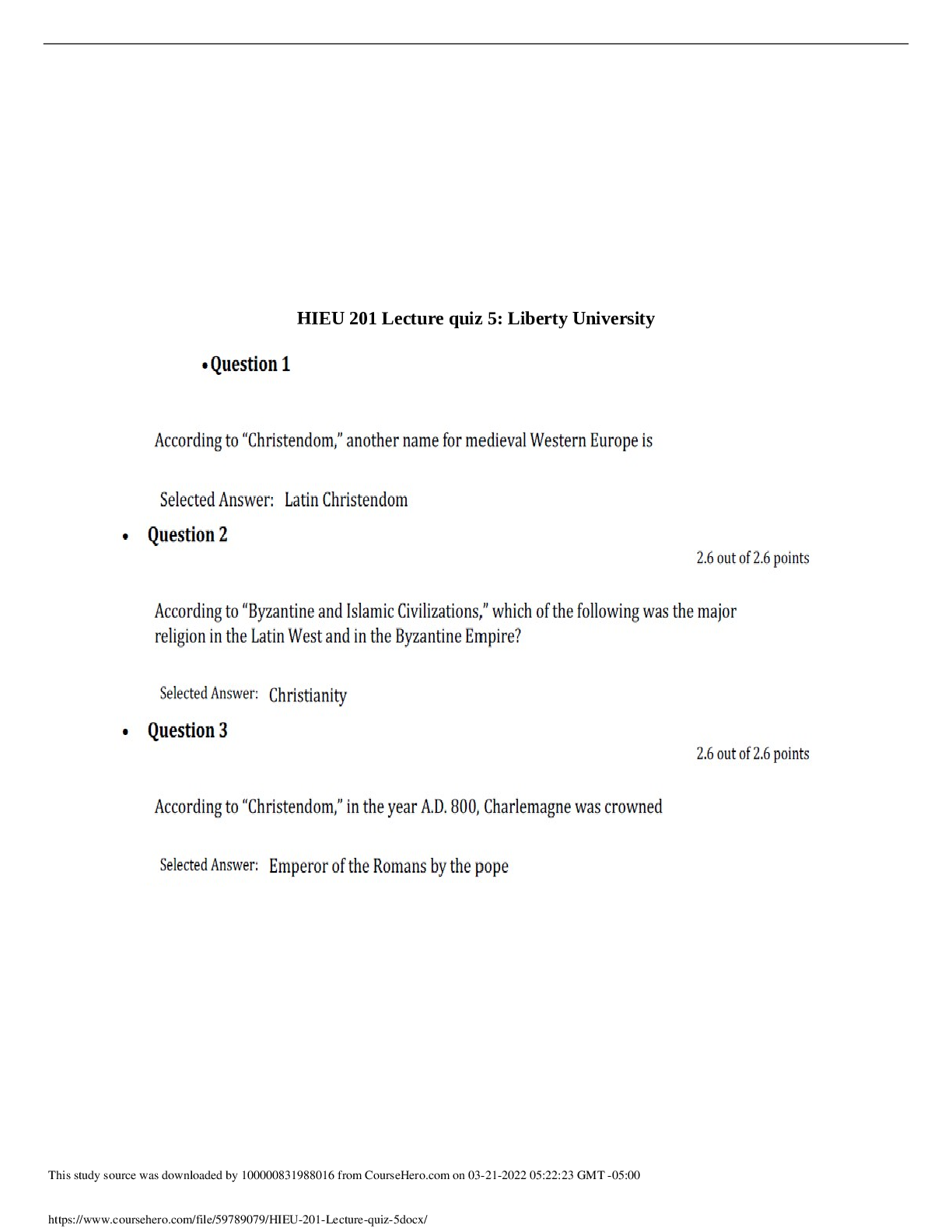History > QUESTIONS & ANSWERS > [SOLVED] HIEU 201 / HIEU201 Chapter 1 Quiz (LATEST 2022) (All)
[SOLVED] HIEU 201 / HIEU201 Chapter 1 Quiz (LATEST 2022)
Document Content and Description Below
Paleolithic religious beliefs a. did not include belief in life after death. b. centered around the idea that human beings needed to appease the forces of nature. c. centered around the idea that f... orces of nature had been created to serve human beings. d. made a clear distinction between nature and the supernatural. Which of the following is NOT a feature of the Neolithic Age? a. Human beings established villages. b. Human beings discovered farming. c. Human beings started using iron tools. d. Human beings domesticated animals. The first civilizations a. did not yet possess specialization of labor. b. lacked organized governments. c. developed systems for administration, cooperation, and record-keeping. d. abandoned the monumental architecture of prehistoric cultures. Sargon the Great a. conquered territories, plundered their resources, and then left to find new opportunities for conquest. b. was the leader of an important Sumerian city-state. c. contributed to the spread of Sumerian culture beyond the boundaries of Mesopotamia. d. was known for his policy of pursuing peace at any cost. The Sumerians erected their religious temples atop huge multilevel mounds called a. cuneiform. b. Nammu. c. ziggurats. d. stele. The kings in ancient Mesopotamia a. were replaced by democracies governed by elders and assemblies of citizens. b. were rulers thought to have been selected by the gods to represent them on earth. c. were believed to be living gods. This study source was downloaded by 100000831988016 from CourseHero.com on 03-21-2022 11:03:34 GMT -05:00 https://www.coursehero.com/file/42163360/HIEU-201-chapter-1-quizdocx/ d. were viewed as being above the law and absolute in their power. The economy of Mesopotamian cities a. depended heavily on foreign and domestic trade. b. was largely unregulated. c. was entirely self-sufficient. d. was conducted by a state bureaucracy. Which of the following describes the Egyptians' relationship with their environment? a. The lack of natural boundaries subjected Egyptians to constant invasion and change. b. Nature served as a source of security. c. The challenges of nature were designed to punish human beings. d. The unpredictability of the Nile made Egyptian life precarious. The pharaohs a. technically owned no earthly possessions. b. had little impact on the lives of peasants and workers. c. were elected by a noble class. d. communicated the gods' will to the Egyptian people. The Hittites a. rejected all aspects of foreign culture. b. were absorbed into Babylonian civilization. c. achieved no substantial technological progression. d. ruled Asia Minor and northern Syria. Which of the following is NOT true of the Persian empire? a. It was ruled by a council thought to represent the people. b. It allowed local elites a large measure of self-rule. c. It was bound together by a uniform language, Aramaic. d. It developed an effective administrative system of twenty provinces. Compared to a rational or scientific view of the world, a mythopoeic view a. sees the world of nature as an entity, like a machine, rather than a living being. b. shows little imagination or emotion in interpreting nature. c. is more logically consistent than the rational view developed by the Greeks. d. appeals primarily to the emotions rather than reason and tends to be more subjective than objective. Hide Feedback The ________ Age is also known as the Old Stone Age. a. Paleolithic This study source was downloaded by 100000831988016 from CourseHero.com on 03-21-2022 11:03:34 GMT -05:00 https://www.coursehero.com/file/42163360/HIEU-201-chapter-1-quizdocx/ b. Archaic c. Neolithic d. Classical Which of the following civilizations rose first? a. Assyrian b. Hittite c. Phoenician d. Sumerian The Epic of Gligamesh depicts the Mesopotamians' mood of a. optimism and hope. b. pessimism and despair. c. stoicism and tranquility. d. sensuality and emotionality. In Paleolithic societies, human beings a. had not yet acquired the ability to make tools. b. were unable to communicate with one another by language. c. lived in large permanent settlements of several thousand people. d. obtained the necessities of life by gathering food and hunting. The central force in the first civilizations was a. iron technology. b. religion. c. popularly-selected governance. d. science. In Hammurabi's code of law a. women enjoyed a legal status equal to that of men. b. women and children had no legal protection. c. crimes against nobles were punished more severely than crimes against commoners. [Show More]
Last updated: 1 year ago
Preview 1 out of 4 pages
Instant download
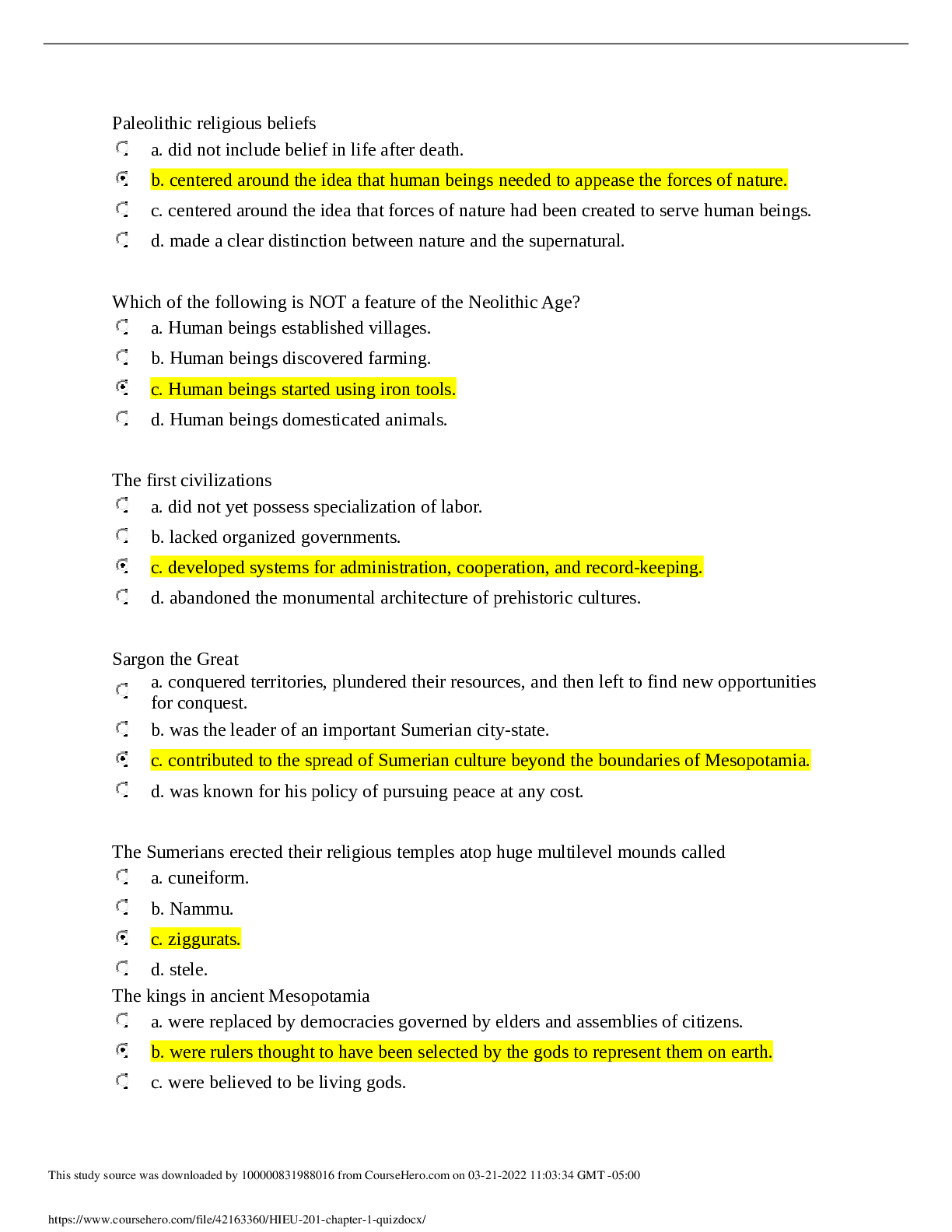
Instant download
Reviews( 0 )
Document information
Connected school, study & course
About the document
Uploaded On
Mar 21, 2022
Number of pages
4
Written in
Additional information
This document has been written for:
Uploaded
Mar 21, 2022
Downloads
0
Views
81


.png)
.png)
.png)
.png)
.png)
.png)
.png)
.png)
.png)
.png)
.png)

.png)

.png)
.png)
